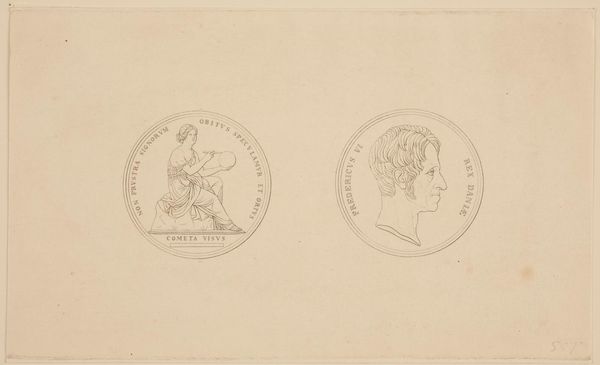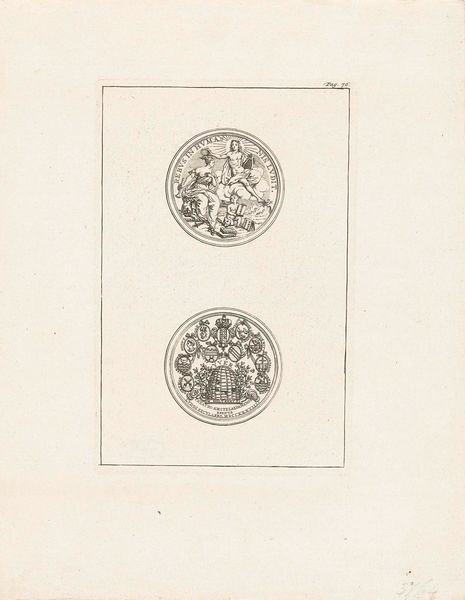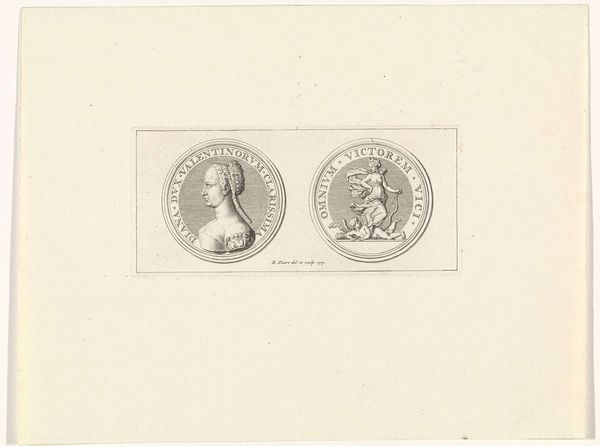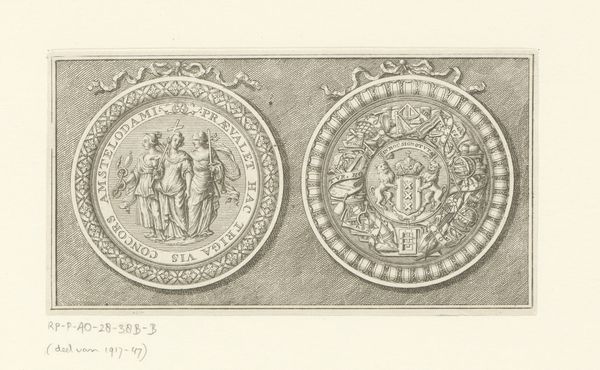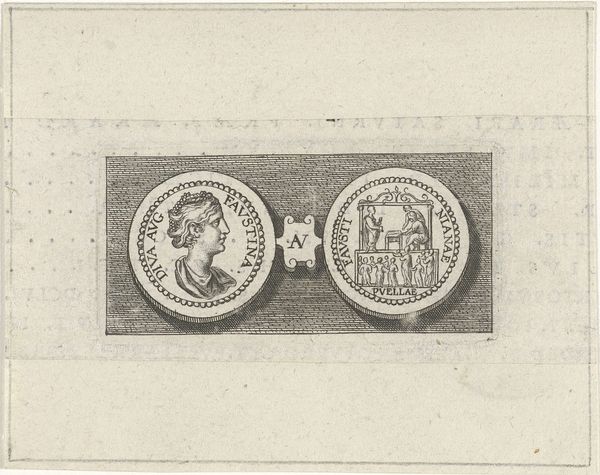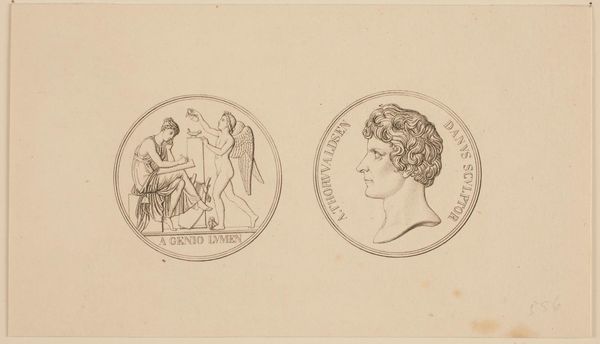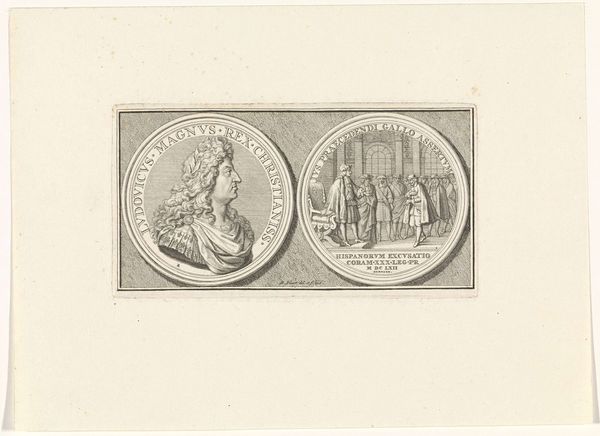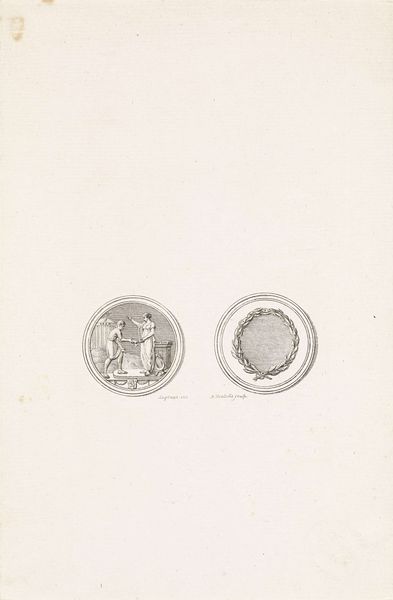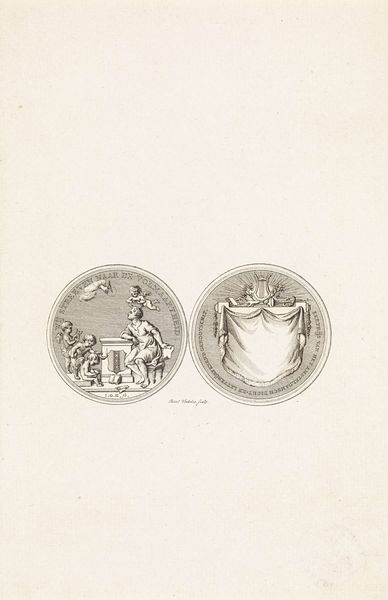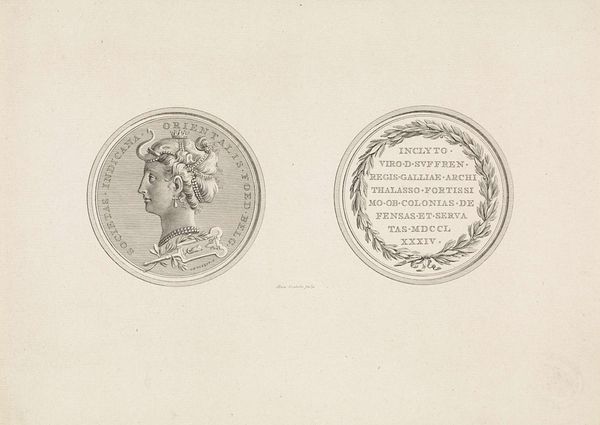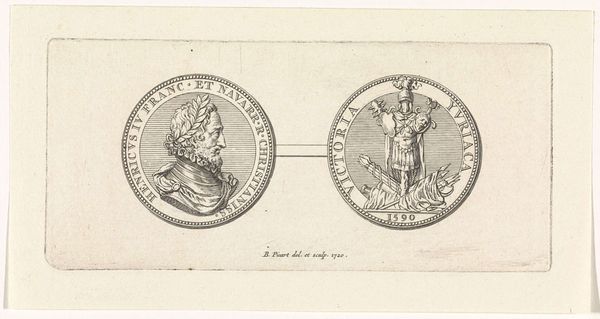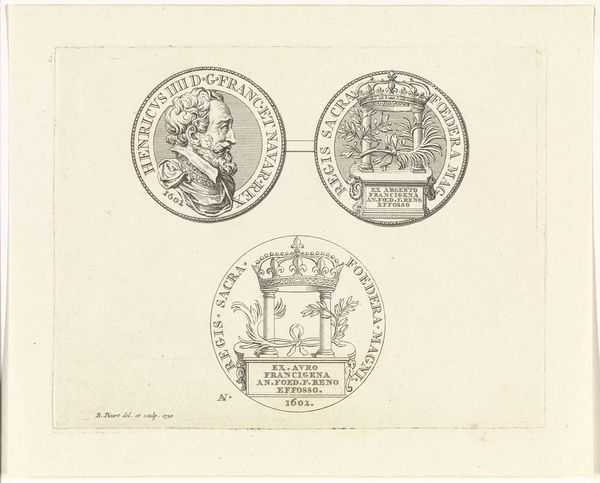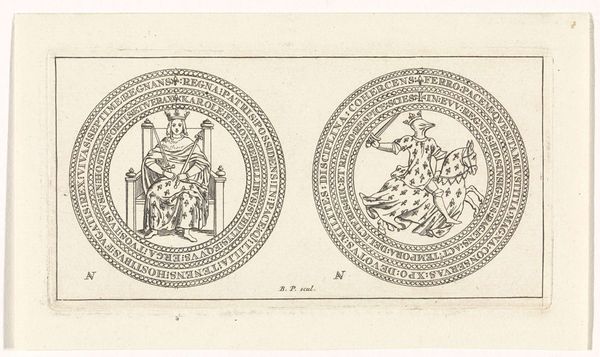
print, etching
#
portrait
# print
#
etching
#
history-painting
#
academic-art
Dimensions: 120 mm (height) x 203 mm (width) (bladmaal)
Editor: So this is Erling Eckersberg’s "Medalje over Thorvaldsen," an etching from 1850. It’s a print of two medallions, I believe? The detailing is incredible. What strikes you when you look at this piece? Curator: The process of reproduction here is quite interesting. Eckersberg, likely responding to Thorvaldsen's fame, created this print. But consider the implications: the original sculpture, undoubtedly an expensive object crafted with skilled labor, is here made accessible, replicable, consumable through the relatively inexpensive medium of printmaking. This act democratizes Thorvaldsen's image. Editor: I never considered that. So it's not just about admiration, but about access to art as a commodity. Curator: Precisely. Look closer: academic art of this period frequently referenced classical themes and forms, but what happens when that high art reference becomes something easily circulated and even collected? Where do we draw the line between art object and product? Editor: It definitely blurs the lines. The print transforms the medal into something easily owned and distributed, diminishing its uniqueness perhaps. Curator: Exactly! And in doing so, it asks us to consider the social and economic factors at play in the art world – the labour involved, the means of dissemination, the target audience, and, ultimately, consumption. Are we meant to view Thorvaldsen as an artistic genius, or a brand? Editor: I see what you mean! Thinking about the print as a commodity that makes art accessible changes everything. I’ll never look at etchings the same way. Curator: It forces us to interrogate how value is assigned not only to art, but to artists themselves, and the labor which produced it all. Hopefully you can apply this perspective on other forms of visual production now!
Comments
No comments
Be the first to comment and join the conversation on the ultimate creative platform.
